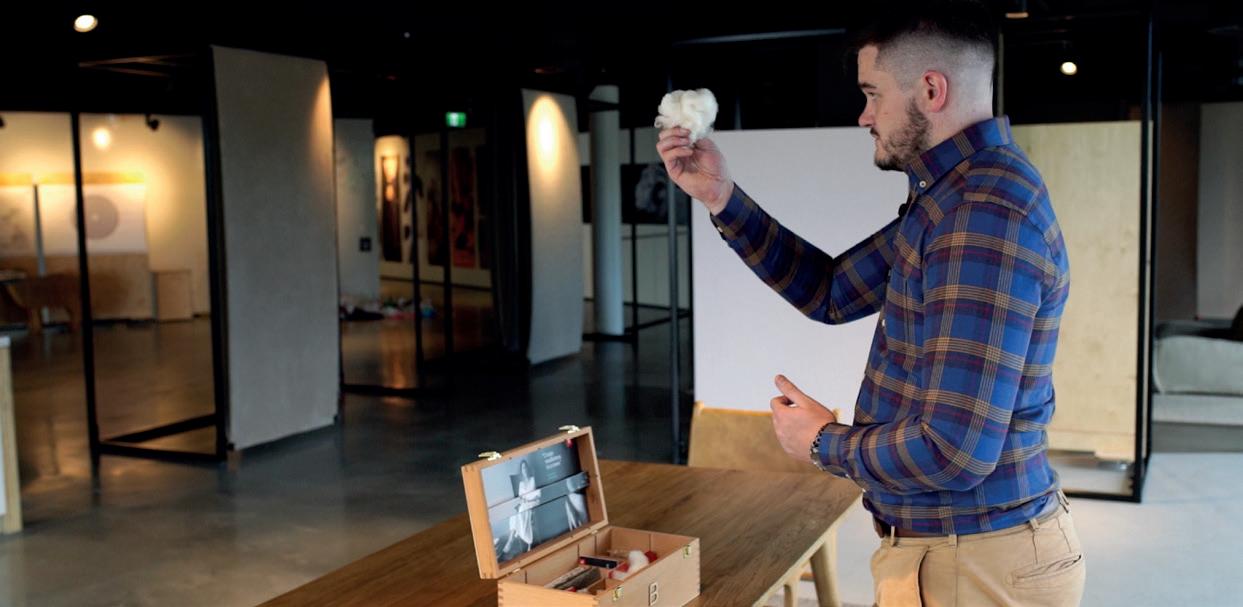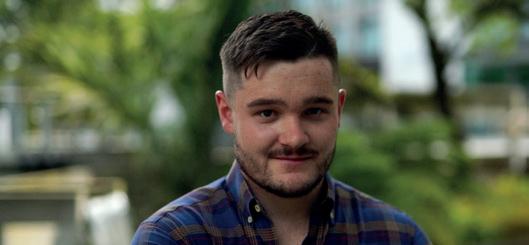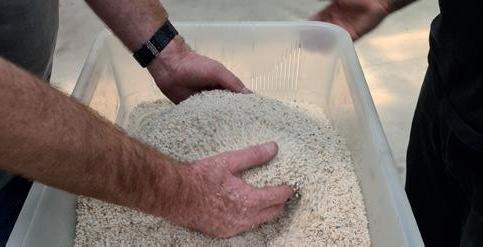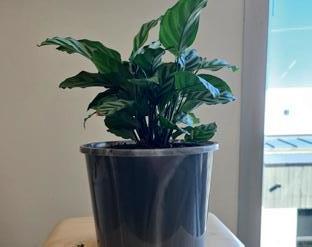
5 minute read
5 minutes with Logan Williams
Inventor of Keravos and NZ Merino Company Director of Technology and Innovation
What is your background and how did your interest in wool technology emerge?
I’m personally attracted to crises. So growing up in Timaru, dairy and wool are common staples in South Canterbury. I’ve seen first-hand the entire collapse of the wool industry. It now costs more to shear the sheep than you get for the wool. I’ve created a range of inventions that help solve other real-world problems in a lot of other industries. The collapse of the wool price is a tragedy and I felt like I could develop a product that would really be able to channel value back to the farmers.
What is Keravos? How did you come up with this idea and when?
I joined New Zealand Merino with the sole purpose of trying to create an invention from strong wool. After about 6 months I had developed the invention. There is 220,000 tonnes of wool produced in New Zealand each year. The only market that can deal with this volume is plastics. They use millions and millions of tonnes a year. At its very core Keravos makes pellets by combining wool and a plastic substitute called polylactic acid (PLA), and those pellets are the building blocks of all materials. So I invented a method of combining PLA from corn starch with coarse wool. So we find a product that we think is really cool, we approach the brand and say ‘we want to put wool in your product’ (to elevate its performance and improve its story) and we make the pellets and put them into their factory and they don’t have a change a single thing. There is no barrier to entry and they are just using the same infrastructure that’s already there. They don’t have to spend money to change their factories at all.
What do you think the biggest drawcard for Keravos is?
The first is that the wool and polymer improves the strength. Another is its weight, so it’s lighter. It’s more sustainable, even if we are bonding

| Logan Williams | Keravos pellets combine wool and polylactic acid (PLA), a plastic substitute.

wool to plastic, we are offsetting the amount of plastic being produced in the world. Our idealised product is a biodegradable polymer with wool, but some customers just don’t want it. The wool fibres disperse randomly and it creates this natural look that you can’t create synthetically. If anyone wants to try our material, they just give us the specs (of their current material), we put wool in it and send the material back to run in their factory via injection moulding. We’ve built a factory and we have a manufacturing agreement with Maisey Group in Hamilton. We are already producing about 4 tonnes of these pellets a day and we are in a good position to scale that up now. The idea is that this facility will supply all of Australasia. Our goal is to sell 50,000 tonnes of material a year and to have about 50 core customers across hopefully 25 different industries. At the moment we have about 10 core customers and we are nailing down a whole bunch of different industry applications, so everything from cladding for buildings, to a boat and even a cooler bin.
For farmers out there with a genuinely great idea for a useful product, where do they start and what are the challenges in developing it from concept to market?
The three things you need to satisfy to make sure your idea works are feasibility, scalability and desirability. The best way is to create a minimal viable product that solves a problem that people are willing to pay for and then go out and engage with customers to develop and refine it further. This kind of market-led innovation is really the key. Essentially your customers need to have helped you create it, that’s the only real way to be sure that they are going to even want it.
What has the response been from sheep farmers and wool suppliers?
They’ve been incredibly supportive. One of the philosophies of this company has been to set the wool price higher than the market. We don’t even need to touch fleece, because fleece will hopefully solve itself with carpet. We take any type of wool including dags and sidepieces and farmers are very supportive of that.
What are some of the most exciting things you’ve seen in the last 2 years in the agricultural technology space and why did these get your attention?
There is a company called Abodo — founded by Daniel Gudsell — that is taking pine waste and using it as a cedar replacement which is pretty impressive. Moving away from the low value commodity space and moving towards innovative, high value products is the future of New Zealand. We have so many amazing commodities in New Zealand, but if we don’t find ways to transform our milk and food and fibre into high value products…we will get disrupted.
How does New Zealand compare to other countries when it comes to developing useful farm-produce based technology?
We are good at creating new on-farm systems to optimise production but disrupting whole market categories is something that we don’t do very well in New Zealand – that is happening more in Hong Kong and Silicon Valley.
What has been the biggest challenge for you in the development of Keravos, how did you tackle that and what was the outcome?
The technology is very precise. So every pellet that we make has to have the exact same amount of wool in it and even the same dispersal.
What country is the most innovative in the space you work in (other than NZ) and where is there the most demand for this kind of product currently?
Long term I think the most demand will come from China and America but because of COVID-19 it has to be Australia and New Zealand for now.
How important do you think it will be for primary producers to find new uses and markets for their produce over the next decade?
Essential. The story of wool in New Zealand is a cautionary tale! It used to account for 50 percent of our GDP. Let’s just say that tomorrow someone invents a synthetic milk, that can be made at scale, is more nutritionally dense and more easily available and is half the price. That’s close to what happened with the invention of nylon in the 1960s and the wool price just collapsed by 80 percent. What’s to say that that’s not going to happen to all our commodities. If we don’t innovate and build research and development, this country will fail.

| Keravos pellets are the building blocks for all types of materials.












